#Generativity vs. Stagnation
Explore tagged Tumblr posts
Text
I miss my youth, a time filled with adventures and experiences shared with friends and significant others. As you reach your forties, different priorities take center stage, such as your career, family, and home. Erikson identified these shifts as part of the stages of development.

16K notes
·
View notes
Text
magnus tarot card and their meanings
I - THE WARLOCK

Based on: I - The Magician
Upright: willpower, desire, creation, manifestation
Reversed: trickery, illusions, out of touch
Relevancy: Magnus is one of, if not the most prominent character in the Shadowhunter Chronicles, appearing and being the main helper consistently throught out different series and generations of shadowhunter. The card also represent both sides of magic - rooted from his demonic origin
VI - LOVE

Based on: VI - The Lovers
Upright: partnerships, duality, union
Reversed: loss of balance, one-sidedness, disharmony
Relevancy: A lot of overlapping details with Alec's card. It's interesting how for them, it is unclear where the angel wing is from, as from a certain angel, it looks like Magnus is shielding Alec with his wing or it just curl up around Alec in contentment. For a chaotic character who secretly crave peace and serenity, this card seem appropriate
XXI - THE WORLD

Based on: XXI - The World
Upright: fulfillment, harmony, completion
Reversed: incompletion, no closure
Relevancy: Maybe to symbolize how Magnus is seeking for fulfillment in life. Also he can be seen as a figure of harmony for shadowhunter who's seeking his help
III - LUDUS - FOUR OF RUNES

Based on: Three of Cups
Upright: friendship, community, happiness
Reversed: overindulgence, gossip, isolation
Relevancy: Magnus's hedonistic side. Ludus is playful love, full of lust with no promise of commitment or responsibility, it certainly rings through to the Magnus of this era
IV - FEARLESS - FOUR OF RUNES

Based on: Four of Cups
Upright: apathy, contemplation, disconnectedness
Reversed: sudden awareness, choosing happiness, acceptance
Relevancy: In contrast to the previous card, this one may symbolize Magnus courage's in choosing Alec, something promise peace but also unpredictable and full of challenges. A fun observation, out of all five of Magnus's tarot cards so far, Alec is featured in nearly half of them (2/5)
Theory Time
A new Tarot Card for Magnus can be Death (end of cycle, beginnings, change, metamorphosis vs fear of change, holding on, stagnation, decay) or an Eldest Curses The Wheel of Fortune (change, cycles, inevitable fate vs no control, clinging to control, bad luck card) with Tessa
Any theory for Magnus's card?
tag list: @magnus-the-maqnificent @literallytypogod @hoezier-than-thou @sociallyineptbibliophile @queenlilith43
@khaleesiofalicante @wandererbyheartt @raziyekroos @onetimetwotimesthreetimess @alexandergideonslightwood
@noah-herondale-lightwood @elettralightwood @dustandducks @deliciousdetectivestranger @delightfullyterrible
@letsgofortacos
@kita-no @thelightofthebane @secrettryst @goldendreams3 @cityofdownwardspirals
@stupidfuckindinosaur
@i-have-not-slept @rinadragomir @potato-jem @kasper-tag
@banesapothecary @culiehua @seolihexagon @n3v3r-l3ft
art credit: cassandra jean
tarot card meaning credit: labyrinthos
#magnus bane#tsc#tmi#shadowhunters#the mortal instruments#the shadowhunter chronicles#city of glass#city of heavenly fire#meta#shadowhunter tarot card#pt2 for magnus as promise to bestie
71 notes
·
View notes
Text
Writing Notes: Life Cycle

Erik Erikson’s 8 stages of the life cycle
Normative Crisis — Age — Major Characteristics
Trust vs. Mistrust — 0 to 1 — Primary social interaction with mothering caretaker; oral concerns; trust or mistrust in life-sustaining care, including feeding.
Autonomy vs. Shame and Doubt — 1 to 2 — Primary social interaction with parents; toilet training; beginnings of autonomous will.
Initiative vs. Guilt — 3 to 5 — Primary social interaction with nuclear family; beginnings of oedipal feelings; development of conscience to govern initiative.
Industry vs. Inferiority — 6 to puberty — Primary social interaction outside home among peers and teachers; school-age assessment of task ability.
Identity vs. Role Confusion — Adolescence — Primary social interaction with peers, culminating in heterosexual friendship; psychological moratorium from adult commitments; identity crisis; consolidation of resolutions of previous 4 stages into coherent sense of self.
Intimacy vs. Isolation — Early adulthood — Primary social interaction in intimate relationship (usually opposite sex); adult role commitments accepted, including commitment to another person.
Generativity vs. Stagnation — Middle adulthood — Primary social concern in establishing and guiding succeeding generation; productivity and creativity.
Ego Integrity vs. Despair — Late adulthood — Primary social concern is reflective: coming to terms with one’s place in the nearly complete life cycle, and with one’s relationships with others.
Erikson’s theory is called a psycho-self-reflexive, contextual process of finding and making meaning in the world.
It is not in conflict with scientific knowledge because, on the hermeneutic account, all psychological knowledge is concerned with this sort of understanding of our world (Verstehen), and not about explaining the universal laws of nature.
His theory charted changes in personality over the entire life cycle, rather than focusing on the early childhood years as critical to all later personality functioning.
Erikson proposed 8 stages of human development, each with its own normative crisis, by which he meant not a debilitating conflict, but rather a period of heightened vulnerability and potential.
He viewed human development as occurring in orderly stages, each with its own special characteristics and its own particular age relationship.
The stages always occur in a particular order and cannot be skipped.
His stages illustrate what Erikson termed the epigenetic principle.
Briefly stated, this principle proposes that critical elements of human personality have a ground plan from which they grow, similar to the physical growth principle by which the undifferentiated cells of embryos develop in orderly ways into organ systems. Thus, all human beings will face the normative crisis of trust versus mistrust in the period of infancy.
The resolution of this crisis leaves the infant with an abiding sense of either trust or mistrust that will become part of later personality functioning.
Each stage builds upon what has gone before and carries elements of itself into future stages.
Erikson’s contributions to psychology, particularly to the study of personality, can be divided into 4 major areas:
His emphasis on the importance of the entire life cycle in personality change
The psychosocial origins of personality
The centrality of self-identity in personality development
The importance of life histories for personality study
Source: Hopkins (1983, p. 74), adapted from Erikson (1968) ⚜ Psychology
#writing notes#psychology#writeblr#spilled ink#character development#dark academia#writing reference#literature#light academia#creative writing#novel#fiction#writers on tumblr#writing prompt#character building#poets on tumblr#poetry#writing prompts#claude monet#writing resources
151 notes
·
View notes
Text

[ Source ]

[ Source ]
here are the first two Google Images results I got for "US median income since 1950"; looks like it's increased a slight amount or almost not at all depending on how exactly you adjust for inflation
yes, household size has gotten smaller; however, I think it makes more sense to ascribe the fertility crisis to stagnating [/functionally shrinking IMO, when you roll in the aforementioned deterioration of supply chains [aka Cost Disease] - so in reality, yeah, I don't think any of these graphs are adjusting for inflation enough] per-household income, than the other way around.
I'd post other graphs I think are interesting from the same Google Images search, but I'd be accused of cherry-picking, and it's true that I'd be skipping over the ones that try to make the Great Stagnation go away by munging the numbers, as is done.
"kids are depressed because the world is uniquely bad now compared to the 1970s or whatever" seems such a silly argument on the face of it? by so many metrics the world has never been better!
if the kids are depressed it's not because depression accurately tracks the state of the world (unless it's directly linked to the ambient CO2 level or phthlates in the bloodstream, that would be hilarious).
#I do have a double standard wrt how credulous I am about graphs that make the Great Stagnation look extreme#vs graphs that make it look insignificant#I think people whose job security relies on being seen as the Serious Authorities have a significant incentive#to p-hack measures of economic growth until everything looks normal#because it proves that everything is really fine and therefore the poors are lazy and stupid if they complain#just like people whose job security relies on being seen as Serious Authorities wrt diet#have significant incentive to p-hack measures of energy input & output to make everything appear in line with CICO#yes I know econ grad students generally don't make the most money#as a twitter user once said: 'social capital [/class] is real and makes [them] very rich [men]'
106 notes
·
View notes
Text
Fans of my Traffic!Gem analysis! Companion fic is here! What if it was Gempearl >:)
https://archiveofourown.org/works/65021557
i fell in love with a war (nobody told me it ended) ( words) by huggywuggysuppy Chapters: 1/1 Fandom: Life Series | 3rd Life SMP Series, Hermitcraft SMP Rating: General Audiences Warnings: No Archive Warnings Apply Relationships: GeminiTay/Pearl | PearlescentMoon Characters: GeminiTay (Video Blogging RPF), Pearl | PearlescentMoon, Life Series Ensemble (3rd Life | Last Life SMP Series), Scott Major | Smajor1995, Joel | SmallishBeans Additional Tags: Canon Compliant, Character Study, for both Gem and Pearl, this is straight up propaganda, Hurt/Comfort, Watcher Lore (Evolution SMP), Gem's canonically the number one Scarlet Pearl fan, behind me of course, GeminiTay-centric (Video Blogging RPF), normal for gem is them vs the world, yummy yummy cycles, Wild Life SMP Setting, manipulation as a love language, Clingy Gem, Not RPF Summary: Of asking, once, are you happy? Remembers Pearl’s stillness — an awful stagnation for someone who captures sunlight and spins it into cathedrals, who accepts silence and makes it laughter. And the defeat in her sigh, her shrug, are we supposed to be? I don’t want to. Not for him. Not for any of them. You’ll work it out, Gem said then. When you’re both ready. No matter how long it takes to get there. “Don’t worry.” She offers her hand to Grian. “I don’t break my promises.” -- Or, Gem’s WL arc was a love letter to Pearl, telling her its okay to not let go
#clingy manipulative sadgirl gem truthers come get your juice#fic share#life series#gempearl#hermitshipping#trafficshipping#one day ill be brave enough to fully doggirlify pearl#this started as a quick 3k oneshot and uhh four months passed and i regret nothing#trafficblr
36 notes
·
View notes
Text
I've been thinking a lot about the Hero of Time lately.
A lot of people have already talked about how Ocarina of Time represents how it feels to grow up. But lately I've been thinking a lot about how Majora's Mask expands on that, as well as the Hero's Shade from Twilight Princess.
Anyway, has anyone else on here heard of Erikson's Psychosocial Stages of Development? Because it turns out that you can see the Hero of Time go through most of them in all three games!
Industry vs. inferiority - at this stage, children begin to develop various skills, figure out what they can and can't do, and build their confidence, otherwise they develop a sense of... well. inferiority. Shown in the first few hours of OoT as Link ventures out into the world for the first time and begins to form positive connections outside of Kokiri Forest.
Identity vs. role confusion - Shown in OoT after Link grows up. All of a sudden he finds out that he isn't a Kokiri like he thought, forcing him to form a new identity for himself as he continues to navigate the world, now responsible for saving it. This continues in Majora's Mask. After Hyrule is safe in the adult timeline and he's sent back to the child timeline, he needs to find yet another new identity for himself since no one remembers him as a hero. Could that be why he leaves to find Navi? To find a new purpose for himself now that he's a child again? There's also the masks, obviously. Representations of a bunch of different identities that you can literally transform into.
Intimacy vs. isolation - Also in Majora's Mask. Despite Link being a complete outsider in Termina, most of the main quest and side quests involve Link interacting with the characters and helping them heal. The most notable examples are the Deku Butler, Darmani and Mikau from the main quests. The way the game allows you to get to know the NPCs in so many different ways depending on what you do in the cycle also reflects this!!!
Generativity vs. stagnation - This stage of development refers to how as we get older, we begin to have the desire to leave a lasting impact on the world. Finally, we see this in the Hero's Shade and his desire to pass on his knowledge.
Anyway! Does this really matter in terms of analysing the games? Not really. I just thought it was a neat thing that further solidifies what we already know about OoT's main themes! Thanks for reading, I loved yapping about this topic.
#legend of zelda#ocarina of time#majora's mask#twilight princess#loz#loz link#loz oot#loz mm#loz tp#ermmm also tagging this with#lu time#i feel like that's relevant right????#young link#tloz
27 notes
·
View notes
Note
Curly's dialogues from How Fish is Made lives rent-free in my head as it is such a good way to see into his head post crash and in general.
The first and third sets are very clear on what his thoughts and feelings are, while the second is a bit confusing (to me), it still says something about Curly
My biggest thoughts on those lines is that is how Curly normal is in his own head vs how most people deem it as purely reflective.
He’s a lot more nuanced and complicated mentally than people want to give him credit for. A lot of thoughts on the characters actions in the game take over how they would be with other issues in a much more balanced space. Especially with the what some of the QnA and other stuff says about them. I think it really speaks on his beliefs and his idea of control with himself/goals. I see people say he’s a moral centrist but I think that paints him in a far too grey light compared to the dialogue we get in HFIM. People tend to equate guilt with blame here and you’d think Curly would be more heartless than depicted in game when you see how some people speak about him.
He’s clearly someone who not only tries to see the better but is looking for the future. I feel like people mistakenly characterize him as always looking at the past or being fatigued with the present when he’s often too busy focusing on unpredictable aftermath. It’s with his lines about resentment and how he developed it by looking at what he could be, what they could’ve been and seeing it in others faces. Seeing what you could’ve had or don’t through another until you just see all your failings and stagnation. The joke to me was always about the futility of the worry. Worried about your future job prospects over the new challenges your general life has undergone? It’s about Jimmy and him, maybe all of them to an extent but it shows a clear distinction between life and work balance, perhaps there isn’t one for him.
I think the dlc shows us what or how Curly may have been thinking during the whole pre-crash and I like to explore him as a more weary and melancholy guy than most in his general life/way of thinking. He genuinely is friendly and means well in life he’s just to boggged down by his own brain. It’s more of an extremely forced optimism and affability he doesn’t know how to turn off than thinking he can truly share circle his way out of conflicts. Too bad it equates to basically the same thing.
51 notes
·
View notes
Note
I’m on the side of heroes having a moral code against killing, but I admit that’s because i was raised watching these characters in cartoons that were more toned down than the comics. And I’m willing to accept the idea of heroes having to kill a villain if it’s to save lives.
But then we run into the REAL reason for the no killing code. If you have a hero who’s willing to use lethal force, how do you justify keeping popular (or at least recognizable) villains around?
Especially if that villain became popular BECAUSE they’re dangerous (or became popular after being rebooted to be more dangerous than the classic goofy harmless version).
Look, the bare bones of anything in comics is, the ability to pull off anything basically depends on a ratio of Skill of the Writer + Rule of Cool vs. The Comic Character in Question's Overall Writing Legacy over How Popular They Are. Tom King got away with pretty much shitting all over Orion in his take on Mister Miracle because a lot of mainstream DC fans more or less shrug off the New Gods in general unless we're talking about Darkseid because Darkseid is The Justice League's Main Villain(tm) and these mainstream DC fans don't really give a shit about any of the framework Jack Kirby gave to Darkseid in the New Gods (Like... credit to my nemesis Zack Snyder for making Steppenwolf the big bad in his Justice League movie rather than Darkseid, but I'm also absolutely not surprised that the most theater--going audiences were like 'Who? I mean... I guess...' in response.)
But the other meta reason for not killing villains is that villains are meant to represent something that is constantly present in all of us. To take it back to a big bad... Darkseid is fascism. Darkseid is despair and entropy. Darkseid represents something we will always have to fight against.
In other words...
Darkseid is.
I'm of the belief that a big part of being human is the ability to recognize your dark side. I don't think the 'no kill' rule exists just because of the comics code, or really for the sake of keeping more interesting villains around (though the latter is definitely a bonus), I think the "No Kill" rule is also a recognition that you can't just cut out anything about yourself or society that you don't like. You have to wrestle with it, consider it, figure out where it came from and how it has taken root in you. And then you figure out how to put it under control. It's... kind of like the "Strength" Tarot card, you know? Patience and compassion are also parts of strength. Mercy and forgiveness is a huge part of strength. So like... you have to deal with the reality that people will disappoint you. Over and over again.
I think that Superman is genuinely afraid of Lex Luthor not just because Lex is a hyper-capitalist ultra genius, but because Lex represents the height of human cynicism. Lex represents the ability to reason your way out of any goodwill toward your fellow man. And look, Krypton was the fucking height of science and reason, and it was a beautiful brilliant shining culture for it, but it was also a culture that was incapable of coming to terms with its own flaws, its own stagnation. Again, it's about the ability to face your dark side.
28 notes
·
View notes
Text
Prem Thakker at Zeteo:
NEW YORK CITY — Muslim socialist underdog Zohran Mamdani declared victory in New York City’s Democratic mayoral primary after former New York Governor Andrew Cuomo conceded late Tuesday. “Tonight, we made history,” Mamdani told supporters at a late-night victory party. “We have done it. I will be your Democratic nominee for mayor of New York City.” Mamdani has accomplished an earthquake result, netting a remarkable 43.5% of the vote while establishment-backed Cuomo stood at 36.4%, with more than 90% of the first choice votes counted. Brad Lander, New York City comptroller and Mamdani ally, was closely behind at roughly 11.3%. Technically, with no candidate getting more than 50% of the vote, the primary goes to a second round in the city’s ranked-choice voting system, but Cuomo’s decision to concede early leaves Mamdani as the expected winner. Ranked-choice votes are expected to be tabulated by July 1. “Tonight was not our night,” Cuomo told supporters after conceding the primary to Mamdani. “Tonight is his night. He deserved it. He won.”
Mamdani’s Rise
Mamdani’s meteoric showing comes after a remarkable rise and a dramatic final few weeks in the campaign. Mamdani began his campaign with low numbers and little name recognition. Early polls had him polling at single digits, with former candidate Scott Stringer, Lander, and State Senator Jessica Ramos often ahead of him. As other candidates stagnated, and beleaguered Mayor Eric Adams dropped out of the Democratic primary, Mamdani continued to surge, reaching voters across the city and cutting into nearly every other candidate’s hoped-for coalitions. The young socialist has also benefited from more than 20,000 individual donors, with around 75% of whom giving less than $100. The election, meanwhile, saw a massive surge in turnout of early voters below the age of 44 – widely suspected to be a favorable sign for Mamdani. Even in historically sweltering heat, voters stood in line all day Tuesday to cast their ballots.
Mamdani’s rise was characterized by his clever use of social media and by relentlessly meeting New Yorkers in the streets. He was helped even further by his very public allyship with candidate Lander. The pair has made several prominent media appearances together, appearing almost like a presidential ticket, rather than rivals. After ICE detained Lander for simply requesting a warrant for a migrant he was accompanying to court, Mamdani was on the frontlines demanding his release. On Monday, the duo appeared on Stephen Colbert’s show together, where they hailed each other’s candidacies.
New vs Old Politics
The dynamics have stood in stark contrast to the establishment-backed Cuomo, whose campaign appeared almost to have an assumptive air about it, that the scandal-ridden ex-governor would simply walk towards the nomination (perhaps the only walking Cuomo would do in New York City, given his reported questionable-residency in the city, and his past-refusal to ride the city’s subway). While Mamdani’s support has manifested in the streets, Cuomo’s “mass” support had manifested most clearly in the form of many politicians and public officials who, in 2021, criticized him or called for him to resign. While Cuomo conceded to Mamdani, he did not rule out running as an independent candidate in the general election. Still, Mamdani’s success is impressive, given the large war chest Cuomo was able to build with the help of billionaires like Michael Bloomberg, anti-free speech hedge fund manager Bill Ackman, and Alex Karp – the co-founder of Palantir, which Donald Trump has tapped to compile intrusive data on Americans.
This is a big victory for progressive Americans: Progressive icon Zohran Mamdani beats out establishment favorite and sexual harasser Andrew Cuomo for the Democratic nomination for New York City Mayor. Mamdani is likely to prevail in the general later this year, setting himself up to be NYC’s first Muslim and South Asian mayor.
See Also:
HuffPost: Zohran Mamdani Stuns Andrew Cuomo In NYC Mayoral Primary
The Guardian: Zohran Mamdani declares historic victory in New York City mayoral primary after Cuomo concedes
14 notes
·
View notes
Text
Round 2
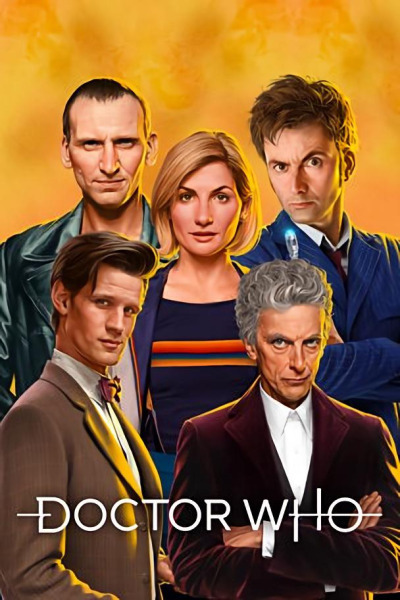
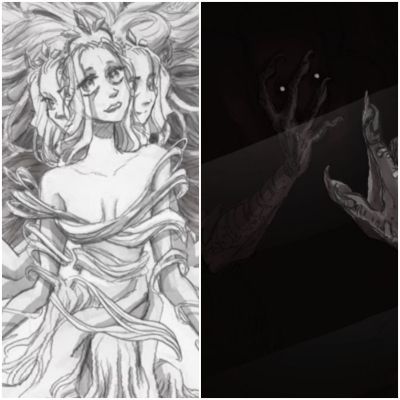
Characters' info under the cut
The Doctor (wiki)
Domain: Time
Propaganda:
Many characters refer to The Doctor (and Time Lords in general) as gods, and in particular the Face of Boe referred to him as The Lonely God. Some cutlures/familes worshiped him as a god, incluidng a Roman family who made a shrine of him for their house

The Long Quiet & The Shifting Mound (The Long Quiet wiki, The Shifting Mound wiki; other aspects of The Shifting Mound are included such as The Princess (wiki) and The Tower (wiki))
The Long Quiet domains: Stagnation, stillness, unending life The Shifting Mound domains: Change, transformation, destruction
Propaganda:
The Long Quiet
OK SOOOO The Long Quiet is the player character and the one sent to Slay the Princess™. He has the choice to do many different things which results in him meeting many different versions of the Princess, and each time they meet (time loop moment), their relationship grows deeper. The Princess is actually the nascent form of his counterpart, the Shifting Mound, who is his exact opposite but also the only other thing like him. They were once two halves of one god, but were torn apart. They are the only things that can make each other whole.
The Shifting Mound / The Princess / The Tower
Shifty is actually the character ever guys. She can be anything- you just need to believe it. She’s a captive princess, cunning witch, a feral beast, a stoic prisoner, a helpless damsel, an unrelenting adversary, a towering goddess, a horrific nightmare, a curious spectre, a razoring killer, a mysterious stranger, and more. But at her core, she’s part of a god torn asunder, and all she wants is to become whole again. I’m soooooo normal about her i promise Mod Note: She is also known as the embodiment of change an perception She's like the barbie of eldritch horror. She's everything. Literally everything. She's the incarnation of eternal change and adapts to your perception of her in each route. I know The Princess and The Shifting Mound are on here, but The Tower (and her later form, The Apotheosis) are The Princess in her aspect as a divine being. She demands worship and she's so powerful she can even control the narrative (or, at least, the narrator)
Both
they were once one entity split into two so that one could kill the other. the Long Quiet was meant to kill the Shifting Mound to free humanity from death and suffering, and the two halves are stuck in a cycle of love, violence, perspective and choice.
12 notes
·
View notes
Text
Oc(s) As Tarot Cards
Rules: Pick a character & a Tarot card of the Major Arcana that best fits your Character & Write about why you chose it
Shout out to the Rook Roost Discord for this idea. Dunno if it’s been done but really liked it from the Diety quiz so here we go
I’d love to know more about what cards everyone picks for their characters so pleased feel free to do this one. I’ll probably do more of these but there are the two I did.
Also used a website called LABYRINTHOS for the card images and for definitions for those who want more inside on each gate. For some reason tumblr took issue with it so here you go
Lucas Laidir-Hawke
The Hanged Man
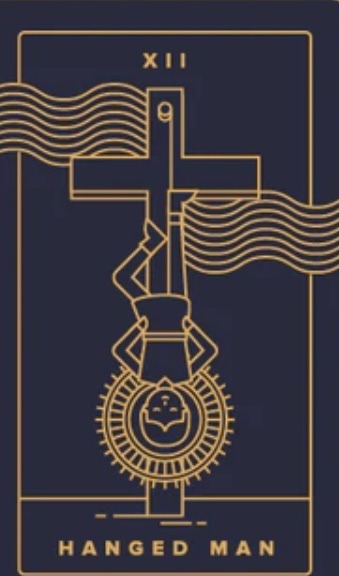
Upright: sacrifice, waiting, uncertainty, lack of direction, perspective, contemplation
Reverse: stalling, disinterest, stagnation, avoiding sacrifice, standstill, apathy
• In both cases I believe Lucas is able to relate to these images. He’s a very self sacrificing person for the people he loves. He is often waiting for many things, his family, for people who tolerate him. He’s a lost boy, and I feel this card in general suits him well.
Grey Laidir:
Strength
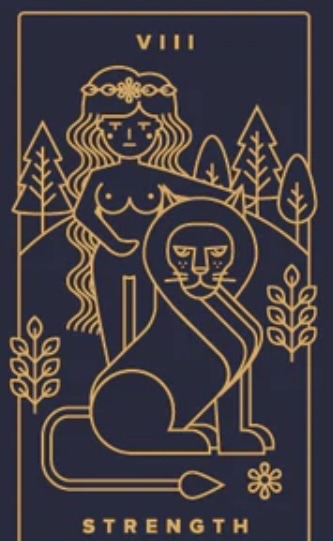
Upright: courage, bravery, confidence, compassion, self-confidence, inner power
Reverse: self-doubt, weakness, low confidence, inadequacy, cowardice, forcefulness
• Once again, Both cases really suit him, when he’s at his lows vs his highs. Grey is someone I view as strong but in his weakest moments he’s doubtful in himself. Overall this card is very representative of him.
8 notes
·
View notes
Text
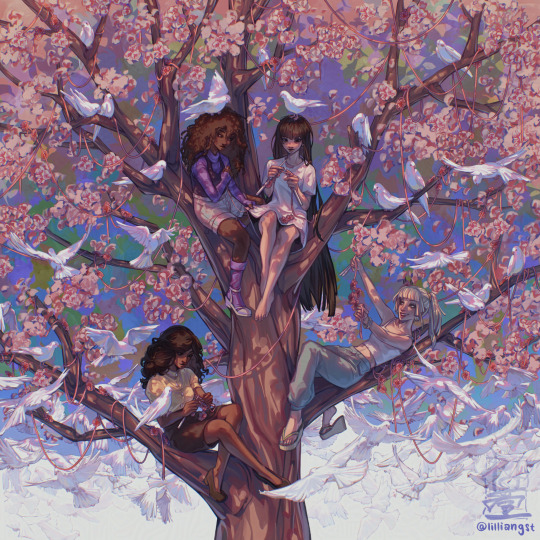
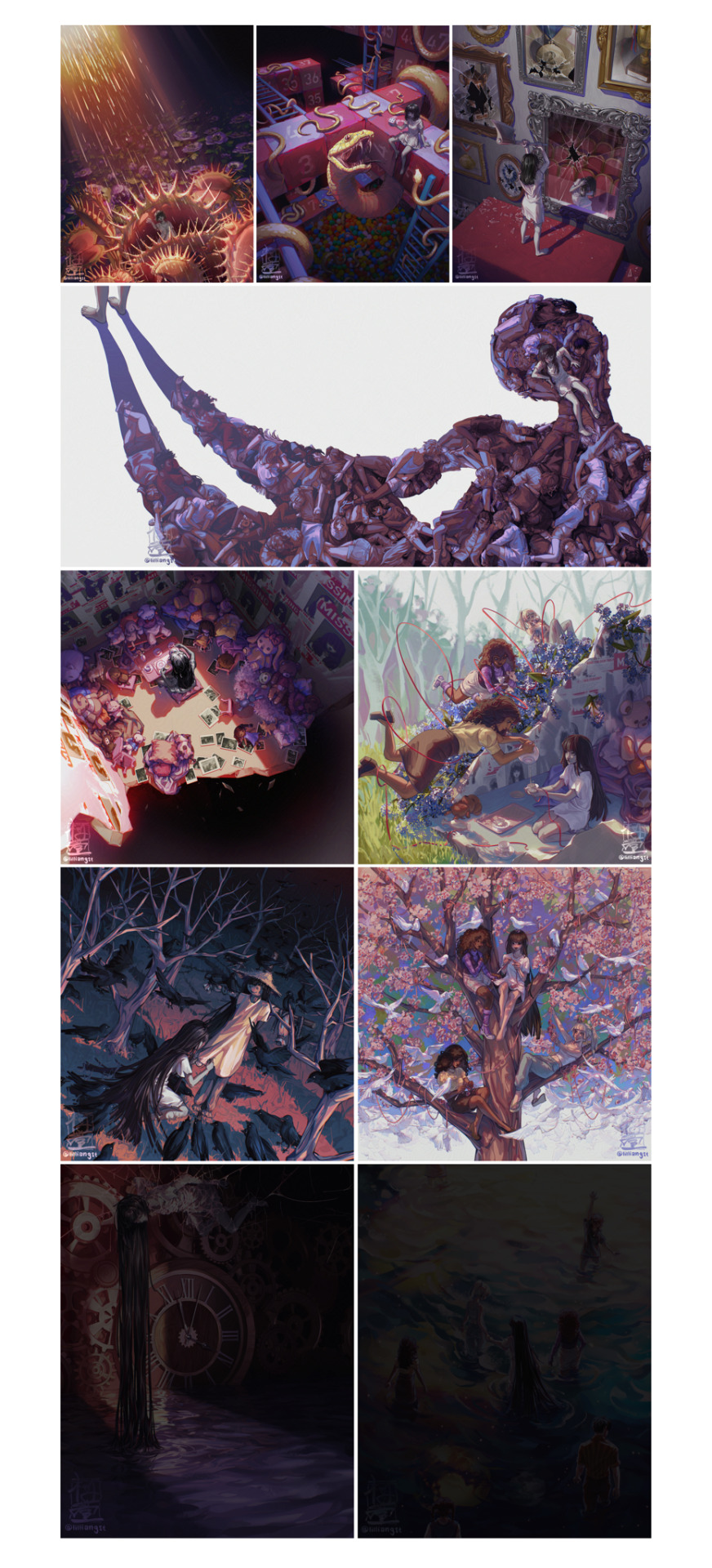
part 8/10 of my senior thesis project !! part 7
The pieces in this series explore the different stages of psychological development that a person may go through in their life, based on Erik Erikson’s theory
STAGE 7: GENERATIVITY VS. STAGNATION (40-65 YEARS)
VIRTUE: CARE
As we grow older, we start to focus on giving back to our community and/or nurturing the next generation. We want to leave our mark and change things for the better. Contribution leads to a sense of productivity and accomplishment; by helping others grow, we also grow alongside them.
Relationships: Family, Colleagues, Community, The Younger Generation
Events: Career Developments, Raising Children, Community Work, Creating a Home
Outcome: A feeling of productivity and accomplishment. Actively being a valuable member of society and creating a positive impact on others, possibly even making revolutionary changes that may help pave the way for future generations
#art#illustration#digital art#lilliangst art#digital illustration#digital painting#art school#lilli schl#procreate#illustrator#psychology#psychological development#stagnation#generativity
16 notes
·
View notes
Text
Worldbuilding rambles #1
What is a Utopia exactly? Let's make one.
A land without problems. Housing? There's countless plants, ground corals and zooplanta that grow around the world, forming elaborate and easy to inhabit burrows for anyone to reside in. Food? The spores/seeds of said vegetation are highly nutritious, and the populations of countless swarming animals are maintained healthy by predators in the wild; Hunting is easy via kill-pits, formed naturally via said vegetation. Water? Rains, and again, vegetation that stores water in various ways; Open bowls, root canisters, and leaf water bulbs.
I'm picturing something like if Scorn (biomech world) had Pandora's (JC Avatar) vibe.
What problems could possibly arise from there, one might ask? I believe there would be, still, just… With lesser stakes.
.
Do you have any army structures in your projects? Ranks, divisions sizes, names, et.c.
I always thought irl armies got confusing as hell naming systems and lots of inconsistency. Like if some big ass general at some point hated being called general because it sounds bad so he invents some "Grand Admiral" rank or something idk. I've had a complex rank system (which I am ought to use in Voice of Steel) with… I think about 50+ ranks?
But also have been thinking of systems like… Based on powers of two, on multiples of ten, on dozenal numbers, et.c. In terms of division sizes that is.
.
It's… Curious how oftentimes folks try to make gods of opposites and all for worldbuilding, uniting way too many ideologies that end up just. Too vague.
I thought of a matrix of gods of sorts, it being a 3x3x3 cube with dimensions of:
Benevolence vs Malevolence (keeping to the Four Universal Rules, or not keeping to them for personal profit)
Order vs Chaos (stagnation, or change)
Creation vs Destruction
The whole thing can be expanded into a tesseract by adding another axis, or even higher hypercubes, by adding even more axis. Each time, the amount of "alignments" of this sort will triple. So, there's 3, 9, 27, 81, et.c. alignments possible. Benevolent, orderly destruction - And you get a crusader god of sorts, a blind judge with a sword off to serve the Steel Law.
Malevolent, chaotic creation - And you get cancer cells, which spread out and bring land to ruin with their presence.
I love those meta ideas because this already sounds flawed. Who is to judge what is what? Who is who? Misused, this system will be used to motivate genocide and whatnot.
.
Concept: Suit-heroica.
The whole idea of this is that it is the suits that bring people powers. Think Ironman, who, even though he is hella smart rich and everything without the armor, does rely on his MARKs about 95% of the time.
Characters wear mantles of heroes, and gain powers related to them. Can be just one clothespiece, like a cape, mask, hat that gives you these powers. But could be also the stereotypical spandex or outright, yet again, Ironman-type full-body suit of armor.
The "heroes" live on, changing "wearers" over time. Some hunters take away the powerful clothespieces and wear several at once; Some kind of Tiger Amulet, Wizard Cloak, and idk, Spring-Heel Jack Boots. In total, you get people who would rather be what they are not - Just to have the powers associated with this something. Come on, a tiger-wizard-vampire gentleman dude is an interesting thought, but I doubt that normies would line up in queue to be something like this.
.
World of ITEMAGICKA: All magic resides within artifacts, which, when possessed allow users to cast specific spells or gain specific powers. Everyone got overcomplicated designs, and countless spells ready to go.
.
Thought of this: We all know concubi (sing. "concubus" - a gender neutral term for sexual energy feeding demons: Succubi and Incubi, female and male respectively¹), right? Those are of lust, as a mortal sin. What the other six mortal sins would look like? Tempting entities that corrupt mortals and push them to do things related to their respective sin²?
¹ Although, the etymology of those words implies a little bit different story, where rather than meaning "female" and "male" horny demons, it means "bottom" and "top" horny demons. ² As well the definition of "sin" itself is somewhat vague to me. As a person who has designed their own ideology (Four Universal Rules), based on the Golden rule (do upon others as you'd wish them to do upon you), "sins" per their definition do not make sense. Gluttony as "overconsumption to the point of waste" makes sense, but as "the innate human need to eat Something Tasty" it does not. Lust is vaguemost as it mashes too many things together - As long as sexual acts fit the Harkness test, to me, they simply cannot be sinful. Greed is a good take, capitalism be damned. Sloth is the most bullshit one since laziness does not exist and the word itself is more often used as a way to force people into labor/paint ideological enemies in a bad color. Wrath is just the violation of the Golden Rule, if put simply. Envy sounds like it's a good take, to some degree, until you remember it's been weaponized so that higher-ups could say to the lower-class folks "You are envious of me being a parasite of society and that's bad, you should be exiled to live in a monastery". Pride is just "thinking yourself first before God" and is just another organized religion/cult manipulation technique.
. Actually had a somewhat dope idea regarding magic, runes and wayshrines.
Hear me out.
A magic system built around wayshrines, each of which bears a single rune out of a complete alphabet. Each stone can be activated daily at high noon, and imprint onto whoever activated it.
By traveling from stone to stone and activating them at midday, you can pretty much just type out spells.
I -ten miles later- M -waits a whole day- M -travels to a remote island- O -travels back to main land, then 58 miles later- R -breaks leg, heals up for several months, returns on the quest now with a sick ass cane- T -77 miles later- A -158.5 miles later- L -goes waaay back to a familiar place- I -goes by a memorized path to another familiar place- T -300+ miles later on a different part of the continent- Y -returns to homeland, gets robbed and dies in a ditch before getting to the ENTER/SEND/CAST stone-
10 notes
·
View notes
Note
Honestly considering John's bitterness about having to forgo scientific study of necromancy originally it makes incredible amounts of sense on how the whole unhealthily obsessed academic attitude seems to be idealized for necromancers and at least an academic *focus* seems to be appreciated.
Like. The fandom mostly talks about John's Imperialism and Catholic Aesthetic in contrast to his human life, which, fair, it's a bit more relevant, but sometimes i just pause and realize: oh. John Gaius and his duplicitous sluts got to influence and direct the development of a whole society. Forgot about that.
Like. I know if he had the time to actually study before doing anything he wouldn't have gotten his necropowers in the first place, but sometimes i like to think about what john could've done if he had... Idk, not a low stress environment because research is stressful, but a chill decade or so to just explore that
OK but actually, I'm not that sure that's the case for post-Res John. He seems much more invested in maintaining the Houses within a state of cultural stagnation than he is in research.
I think the Canaan House era was all about scientific study, like John said in HtN, they "discovered the scientific principles." But not all of those were shared with the population of the Houses! It's been ten thousand years, and nobody in the House could conceive of something like Teacher, who Anastasia made within the first 200 years post Resurrection, with the "normal" amount of necromantic aptitude of a mortal, not of a Lyctor.
There's the constant implication that there has been very little innovation in ten thousand years of history. When Abigail says "there is a lot we don't understand about the River" she also calls the current state of research on the Fifth "stifled, stultified, complacent." She talks about it like it's a somewhat contemporary issue, but I believe it's gone on for longer than that. The Sixth have been mapping consanguinity lines for generations, but I don't think their obsession with genetic diversification has brought anything of note. It's like going to university to study maths, but the curriculum stops at the very beginning of elementary calculus and nobody has gone further in millenia.
We know that the Lyctors have delved into some areas of necromancy, like Augustine and the River, but that research hasn't been shared with the Houses even on a theoretical level. We know there's a constant feeling that the Houses are throwing around accusations that some avenues of necromancy are "heretical", even if the one guy who could clear up once and for all what's heresy hasn't bothered speaking up.
I agree with your last half - I think that in a much different story where a random guy gets chosen by the soul of the earth to receive divine powers and maybe the situation is less stressful, it could have been a net good for humanity instead of the end of the world. But in terms of John encouraging a scientific approach to necromancy post-Resurrection, I think he (and the Lyctors, maybe) have actually done the opposite. I'm not sure how intentional it is vs. how much it's a metaphor but the Houses are the opposite of a thriving society, culturally. It's all so stifled and stale, a civilisation in suspended animation.
#Anonymous#SORRY FOR GOING SO OFF TOPIC LMAO#ask#tlt thoughts#the nine houses#ejg#elle tlt posting#tlt#abigail
65 notes
·
View notes
Text
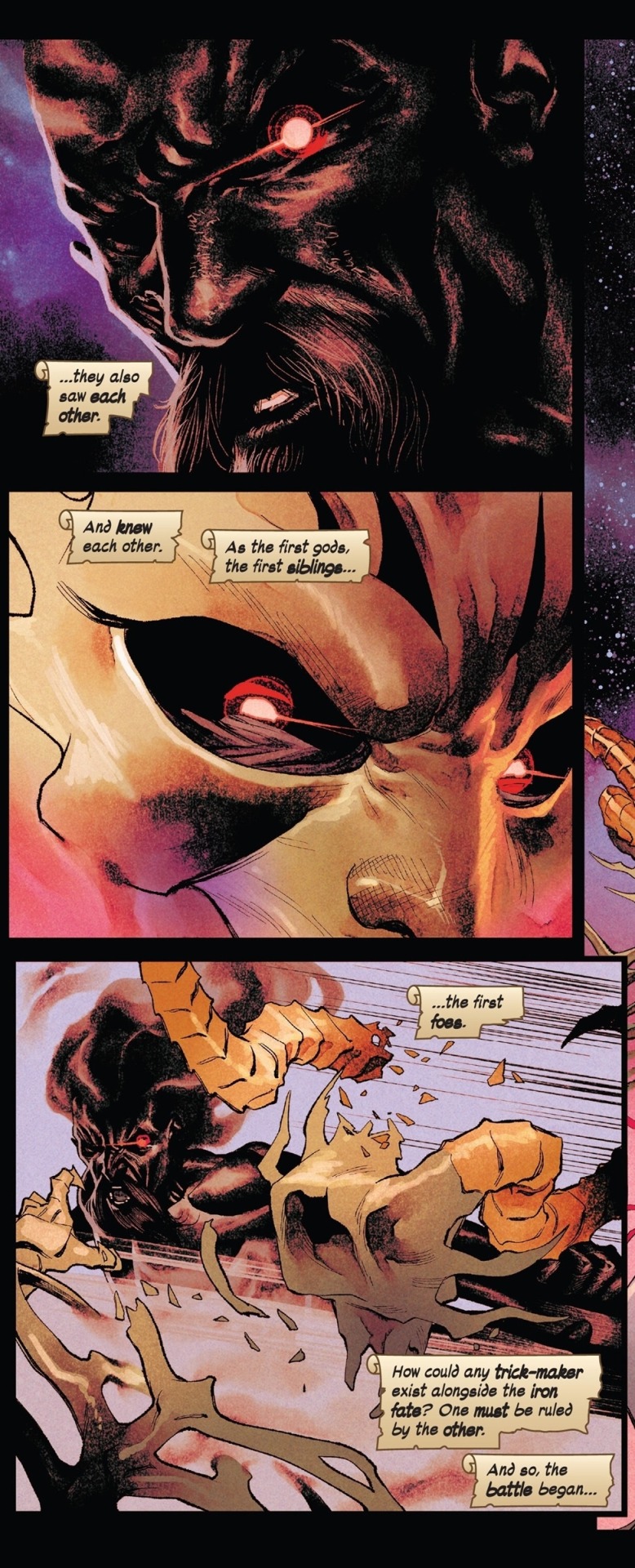
Of everything that happens in the new issue of Immortal Thor, this scene stands out the most to me as something I feel will be one of the most important scenes of both the issue and the run as a whole.
In the very beginning of gods, of Earth, of humanity, of stories, among the very first incarnations of the archetypes that Thor and Loki embody - the mighty warrior and the devious trickster - see each other and immediately get into a fight out of sheer revulsion of everything their twin stands for.
Good vs evil. Light vs dark. Order vs chaos. Brawn vs brain. Control vs freedom. Life vs death. Fate vs choice. Peace vs war. Mundanity vs magic. Law vs crime. Creation vs destruction. Love vs hate. And many more. Clashing opposites, battling for supremacy. A cycle of violence and debate passed down the generations, from father to son, mentor to student, predecessor to successor, and so on. Brother waging battle against brother just to prove a point, to fulfill their role in the story. An ideological blood feud applied to archetypes and titles and narratives. Trickling all the way down into it's present expression... Thor and Loki.
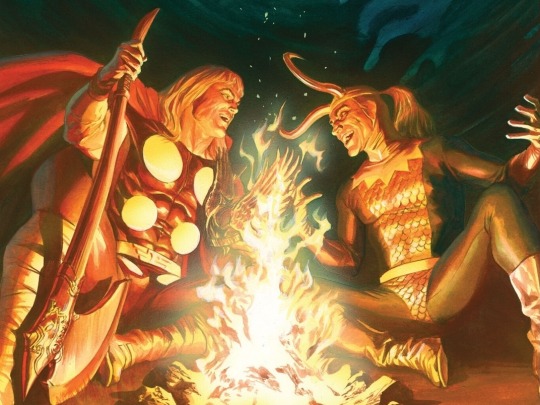
Already it's clear that cycles of this sort are going to be a very large theme of Immortal Thor. The concept of recurrences and stories being retold over the years have been talked about a lot by the narrator. The comic goes to great lengths to draw attention to how Thor and his cast and, by extension, their own world in the form of comics are falling into patterns that transcend through time. And I feel that's going to be the crux of a great deal of the plot.
Loki hates the cycle. In their roles as both the goddess of stories and the god of mischief, they abhor stagnation and repetition. They want to be free of the roles "assigned" by the narrative. They want to be free of the debate, the never-ending battle of good and evil that ha destroyed their family time and again. Thor would want to be free of it too, if he realized he were part of it. But he struggles to do so. He's a rock in the sea of time. A god among mortals, a child of two worlds watching in confusion and grief as his human friends age and change and die around him while his divine brothers and sisters continue to stay the same. In this, they are trying to do what Gaea wanted to do but couldn't; to break the cycle.
Toranos and Utgard-Loki don't want to break the cycle. They ARE the cycle. Embodiments of the sins of the forefathers carrying down to their children. Representations of the archetypes of Thors and Lokis at their absolute worst, shorn of all true depth and compassion and true belief in their aspects in favor of continuing the godforsaken argument. Shades of the old festering in the blood of the young, infesting them with their baggage, holding them back from growing better, and lashing out at them when the new generations fail to meet the standards of the elders. And they may not even realize they're doing so.
This isn't the first time this theme has come up in Al Ewing's work.
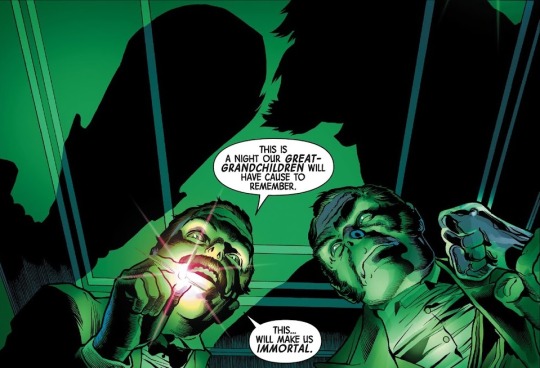
Immortal Hulk presents the conflict between the Hulk and his archenemy, the Leader, as a similar generational feud. Both in a literal familial sense (the Banner and Sterns families being divided and warring after Robert and Samuel Sterns turn on each other) and a larger ideological sense (people using the power of gamma for good or ill, going all the way to the first Hulk being born from a leader's selfish desire to misuse magic as a tool of conquest). Sometimes the thoughtful man is the hero, sometimes the brute is. But they always fight. Senselessly and pointlessly. And the Green Door and the horror it brings was only stopped... by breaking the cycle. By defying it. By Hulk choosing to never sink to Leader's level, or those of his predecessors, and instead choose to forgive.
And Ewing makes clear cycles and wars spanning centuries like this are common in the Marvel Universe. The Eternity Mask is passed down generations of men and women, always fighting for freedom against those who would deny it. Nick Fury passes his name and identity and role onto his son. There's always an Ant Man, inheriting their predecessor's problems, and there's always an Ultron, trying to claim dominion. Arakko and Krakoa alike are divided between those who hold to the old ways and those who seek new ways. Ebony and Ivory Kings do their work, from within and without. On and on, the wheels turn.
It even goes back to the very beginning. To prior multiverses. All tracing back to the first super battle, the first superhero and first supervillain - Lifebringer-One and Anti-All, the cosmic knight and the entropic dragon - fighting for the fate of the nascent world.
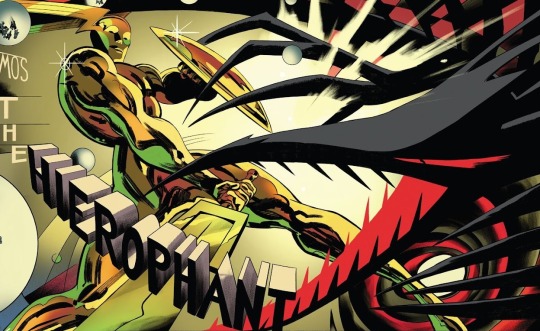
Effectively, Ewing views and represents the narratives of superhero comics as we know them, as a sort of repeating song. The metatextual commentary is that all this has happened before and will happen again, because humanity will always dream of heroes battling monsters. There will always be a knight and a dragon. A warrior and a trickster. A superhero and a supervillain.
But he also acknowledges how this can go too far. How comics can fall into stagnating loops of repeating stories and stall status quos. Spider-Men being denied their stories because editors want to live in nostalgia instead of the now. X-Men getting their progress towards coexistence undone because writers can't handle change.
And this is all what Immortal Thor is about and will be about. The struggle for balance between opposites and extremes. Cyclical narratives and worlds. Ideas and stories being inherited and passed on. And all of it a commentary on comic books themselves and their history and role in culture.
It's brilliant stuff.
#immortal thor#the immortal thor#thor#mighty thor#thor odinson#loki#loki laufeyson#marvel#marvel comics#marvel 616#earth 616#marvel universe#al ewing#comic books#comics#media analysis#character analysis
55 notes
·
View notes
Text
🔮 THE FUTURE OF STUDENT DEBT: DYSTOPIA OR REVOLUTION?
What happens next depends on what WE do next ✊
THE CURRENT MOMENT: A CROSSROADS
🎯 WHERE WE ARE RIGHT NOW:
42.7 million Americans trapped in student debt
$1.78 trillion total debt and growing
Political system designed to protect lenders
Legal system that makes escape impossible
But also: Growing awareness and resistance
⚡ THE AWAKENING:
Gen Z and Millennials understand the scam
Cross-racial coalitions forming around debt relief
Political pressure forcing policy responses
Corporate resistance shows we're threatening their profits
SCENARIO 1: THE DYSTOPIAN TIMELINE 💀
If We Do Nothing:
2025-2030:
Debt reaches $2.5 trillion as more students borrow
Default rates spike during next recession
Wage garnishment becomes normal for entire generation
Private loan expansion as federal programs get cut
Intergenerational poverty as parents and children both trapped
2030-2040:
Social Security garnishment affects millions of retirees
Housing crisis deepens as young people can't buy homes
Birth rates plummet as debt makes families unaffordable
Brain drain accelerates as educated Americans emigrate
Economic stagnation from reduced consumer spending
2040+:
Permanent debtor class of educated Americans
Hereditary debt as family poverty perpetuates
Educational apartheid where only rich kids can afford college
Social unrest as economic mobility disappears completely
SCENARIO 2: THE REVOLUTIONARY TIMELINE 🔥
If We Fight Back:
2025-2030:
Mass debt strike forces government action
Electoral pressure delivers progressive majorities
Comprehensive debt cancellation through legislative action
Free public college prevents future debt accumulation
Banking reform eliminates predatory lending
2030-2040:
Economic boom as young people spend instead of servicing debt
Innovation surge as people can afford career risks
Housing recovery as millennials/Gen Z enter market
Family formation increases as finances stabilize
Wealth gap narrows as education creates actual mobility
2040+:
Education as public good like K-12 schooling
Meritocracy restoration where talent matters more than wealth
Generational justice achieved through systematic reform
Economic democracy where education doesn't create debt bondage
THE INTERNATIONAL PERSPECTIVE:
🌍 HOW OTHER COUNTRIES DO IT:
Germany:
Public universities: €0-500/semester tuition
Living stipends: Government pays students to attend
Result: Highly educated workforce, strong economy, no debt crisis
France:
Public university tuition: €170-380/year for EU students
Quality education: World-class institutions
Student support: Housing assistance, meal subsidies
Nordic Countries:
Free tuition: Even for international students
Living allowances: Students get paid to study
Economic outcomes: Highest social mobility in world
🇺🇸 AMERICAN EXCEPTIONALISM:
Most expensive higher education in developed world
Highest student debt levels globally
Lowest social mobility among peer nations
Richest country with most educated population living in debt
THE CORPORATE RESISTANCE:
💰 WHY THEY'LL FIGHT US:
Loan Servicers:
$1.8 billion annually in government contracts at risk
Stock prices tied to debt collection volume
Executive compensation based on revenue from our misery
Private Lenders:
15% profit margins on student loans vs 3% on mortgages
Guaranteed collection through bankruptcy protection
Political influence through campaign contributions
Colleges/Universities:
Tuition revenue depends on easy loan money
Administrative bloat funded by ever-increasing costs
Endowment growth prioritized over affordability
🎭 THEIR TACTICS:
Divide and conquer: "Forgiveness unfair to responsible borrowers"
Victim blaming: "Personal responsibility" messaging
Legal warfare: Endless court challenges to relief
Political capture: Lobbying, campaign contributions, revolving door
WHAT WE CAN DO: THE RESISTANCE PLAYBOOK
🗳️ ELECTORAL POLITICS:
Primary Elections:
Vote in primaries where student debt is a litmus test
Support candidates who pledge comprehensive relief
Reject incrementalism - demand full debt cancellation
Single-issue voting until problem is solved
General Elections:
Youth turnout is everything - they need our votes
Down-ballot races matter - state AGs can challenge predatory lending
Ballot initiatives on education funding where possible
Cross-generational organizing - connect with affected parents
🚫 DIRECT ACTION:
Debt Strikes:
Collective refusal to pay until demands met
Safety in numbers - individual strikes fail, mass strikes succeed
Strategic timing - coordinate with election cycles
Media attention - make debt strike a national story
Corporate Targeting:
Boycott loan servicers and their parent companies
Shareholder activism at Navient, Nelnet, etc.
Protest at headquarters and executive homes
Disrupt business operations through legal demonstrations
Educational Disruption:
Campus organizing against tuition increases
Alumni pressure on university endowment policies
Trustee accountability - challenge board members
Graduation protests to highlight debt burden
💡 POLICY SOLUTIONS WE NEED:
Immediate Relief:
✅ Full debt cancellation - not just $10k or $50k, ALL of it
✅ Interest rate elimination - 0% on all existing loans
✅ Bankruptcy restoration - allow discharge like any debt
✅ Garnishment prohibition - end wage and benefit seizure
Systemic Reform:
✅ Free public college - funded like K-12 education
✅ Tuition caps for private schools receiving federal aid
✅ Endowment taxes on wealthy universities hoarding money
✅ Living stipends for students from working families
Financial Justice:
✅ Banking regulation - end predatory student lending
✅ Corporate accountability - criminal charges for loan fraud
✅ Reparative justice - extra relief for targeted communities
✅ Wealth taxes to fund education as public good
THE GENERATIONAL MISSION:
👥 WHO WE'RE FIGHTING FOR:
Current Borrowers:
Immediate relief from crushing debt burden
Mental health recovery from financial trauma
Life restoration - marriage, family, homeownership possible again
Career freedom to pursue passion over profit
Future Students:
Debt-free education as fundamental right
Merit-based opportunities not wealth-based selection
Innovation unleashed when smart kids can afford college
Economic mobility through education not debt
Society Overall:
Economic growth from increased consumer spending
Innovation boom from risk-taking ability
Social justice through equal educational access
Democracy strengthened by educated, non-indebted citizenry
THE MOVEMENT WE'RE BUILDING:
🔥 SIGNS OF HOPE:
Political Momentum:
Student debt now major campaign issue
Progressive candidates winning with debt relief platforms
Mainstream Democrats moving left on issue
Even some Republicans acknowledge crisis
Cultural Shift:
Shame reduction - debt seen as systemic not personal
Collective action replacing individual suffering
Cross-class solidarity as middle class joins working class
Intergenerational alliance between parents and children
Economic Pressure:
Housing market stagnation forcing policy attention
Consumer spending patterns showing debt impact
Labor market effects as workers demand wage premiums
Retirement crisis looming from garnished Social Security
YOUR ROLE IN THE REVOLUTION:
🎯 IMMEDIATE ACTIONS:
Political:
Register to vote and vote in EVERY election
Primary challenge politicians who won't commit to full relief
Call representatives monthly about student debt
Join local political organizations with debt relief platforms
Economic:
Refuse to pay private loans if safe to do so
Document abuse by loan servicers for legal action
Support mutual aid for struggling borrowers
Divest from companies profiting from student debt
Social:
Share your story to reduce shame and build solidarity
Educate others about how the system actually works
Support affected friends with practical help
Challenge victim-blaming narratives wherever you see them
THE FINAL TRUTH:
This isn't about individual financial responsibility - it's about collective liberation.
💪 WE HAVE THE POWER:
42.7 million borrowers = massive voting bloc
Intergenerational impact = even larger coalition
Economic leverage = our labor and consumption matter
Moral authority = we're fighting for justice, they're fighting for profit
🔥 THEY HAVE THE SYSTEM:
But systems can be changed
When enough people refuse to participate
When voting becomes organized resistance
When silence becomes solidarity
THE CHOICE IS OURS:
Will we accept permanent debt bondage as the price of education?
Or will we demand that in the richest country in human history, learning shouldn't require a lifetime of financial servitude?
The student debt crisis ends when we decide it ends.
Not when politicians allow it. Not when corporations agree. Not when the system fixes itself.
When WE decide we've had enough.
🔥 THE REVOLUTION STARTS NOW. 🔥
Education should unlock human potential, not lock people in debt. We have the power to make that a reality - we just have to use it. ✊
GOTO FIRST POST -> CLICK HERE
#student debt#debt revolution#student loan forgiveness#debt strike#student activism#free college#debt cancellation#gen z#millennial#student loans#education justice#economic justice#political action#system change#debt resistance#collective action#student debt crisis#future generation#revolution
3 notes
·
View notes